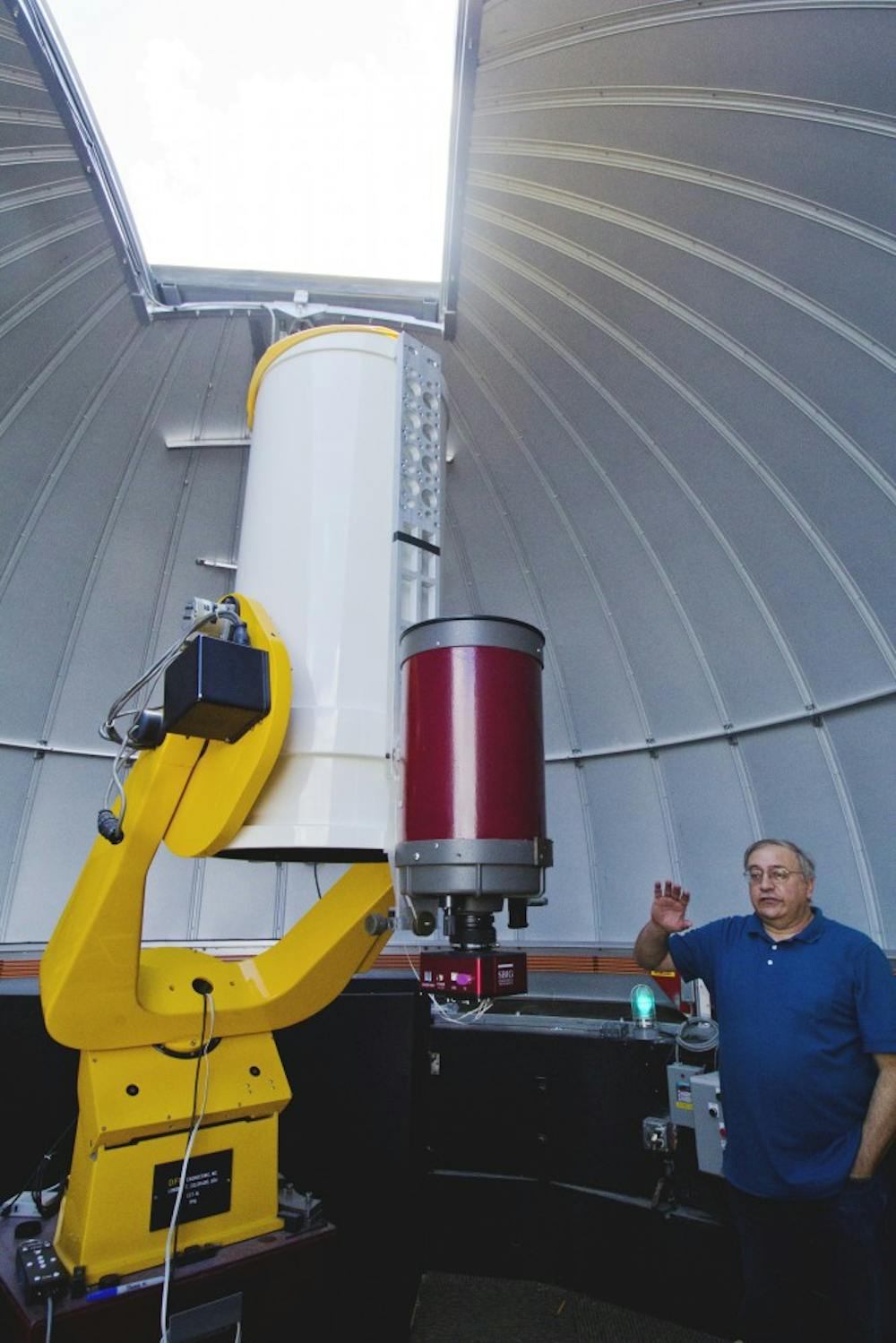Observatory in Brooks Hall allows students to space out

[gallery type="slideshow" ids="187904,187905,187906,187907,187908" orderby="rand"]
In a galaxy far, far away, there are planets revolving, stars exploding and nebulas forming.
With Central Michigan University's observatory on the top of Brooks Hall, students and faculty members can view these astronomical anomalies.
Glen Williams, an astronomer and professor in the physics department, said the telescope is of a professional grade. The piece of equipment, he said, is worth over $100,000 and is comparable to the telescopes used at other universities like University of Michigan.
"It's probably one of the nicest observatories in Michigan," Williams said. "This is a professional telescope. The 16-inch is the smallest (DFM Engineering in Colorado) makes. U-M has a telescope of the same make and size of this one."
The telescope is used by students and faculty for classes, academic papers and research. Williams said the instrument will be used by somewhere near 150 students each semester as a part of the astronomy classes. There are also smaller telescopes used on the observation deck on the roof of Brooks.
"For labs, the instructor will pull out telescopes and set them around the deck," Williams said.
Christopher Tycner, the department chair of the physics department, said students will use the telescope frequently for training for their careers and for research.
"We encourage our undergraduates to visit the observatory during the semester," he said. "We offer first year lab experience for students. They look at stars and will utilize the observation deck, too."
Williams added that the high-powered telescope can point to any place in the sky with very high accuracy.
Currently, the mirror from the base of the telescope is being cleaned. Williams said the 16-inch mirror will collect dust from outside. The university sends the mirror to California every six years or so to get a new finish.
One of the newer features of the observatory is a new dome to protect the telescope. In 2011, a private donor helped pay for a replacement dome along with some funds from the College of Science and Technology and the physics department.
The physics department also hosts open houses once a month to allow students, faculty and community members to check out the observatory and observation deck.
"Attendance varies from a dozen to a hundred people," Tycner said. "We can get quite a number of people during special events like a lunar eclipse. You can see things like Jupiter and its moons or Saturn and its rings."
The open houses will start in the fall, Williams said, giving students a glimpse at the stars they are looking for.



